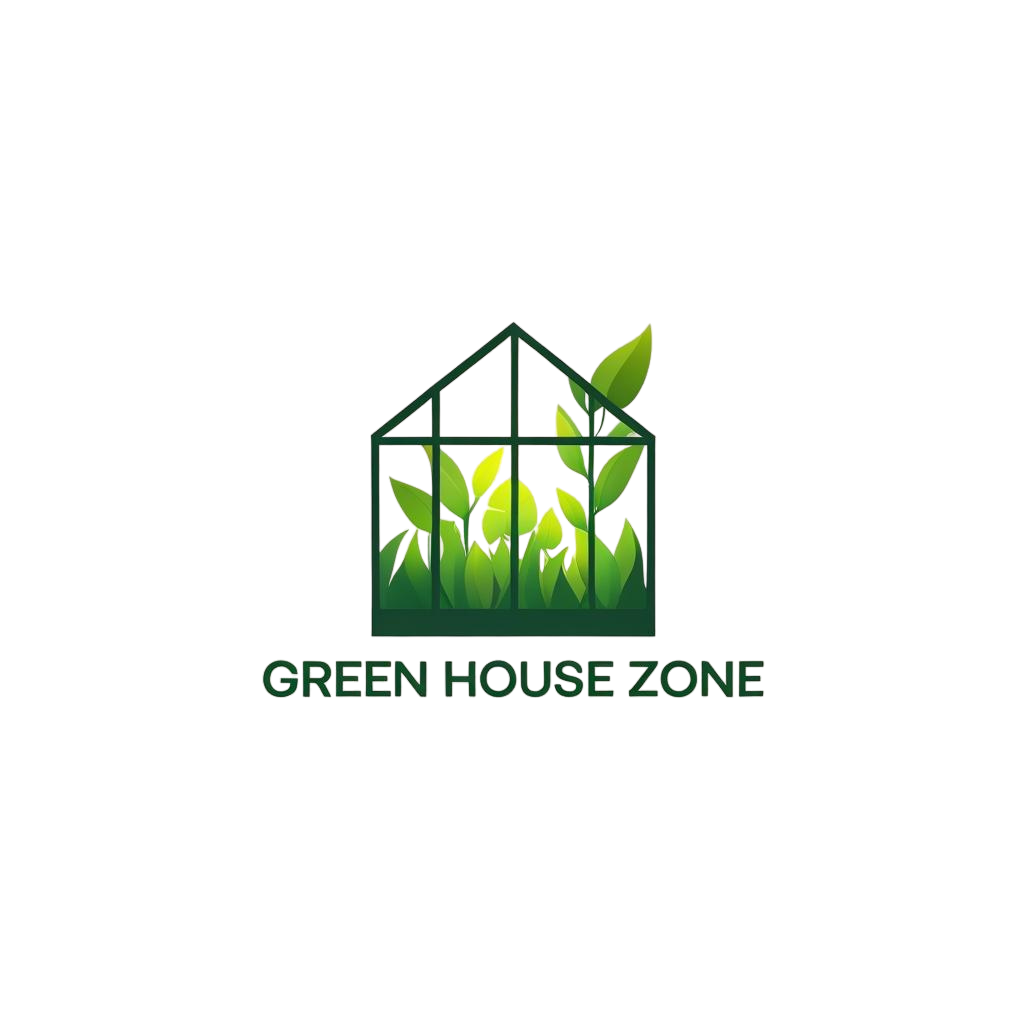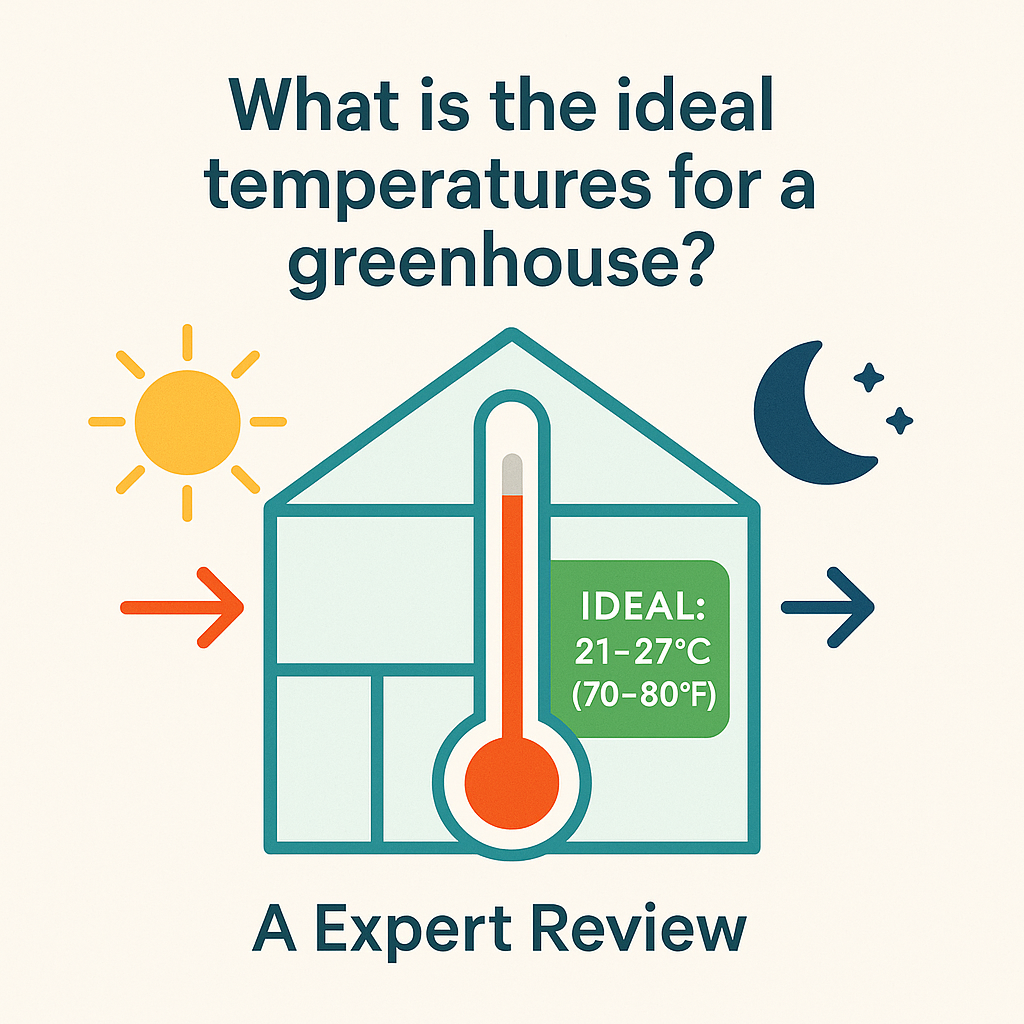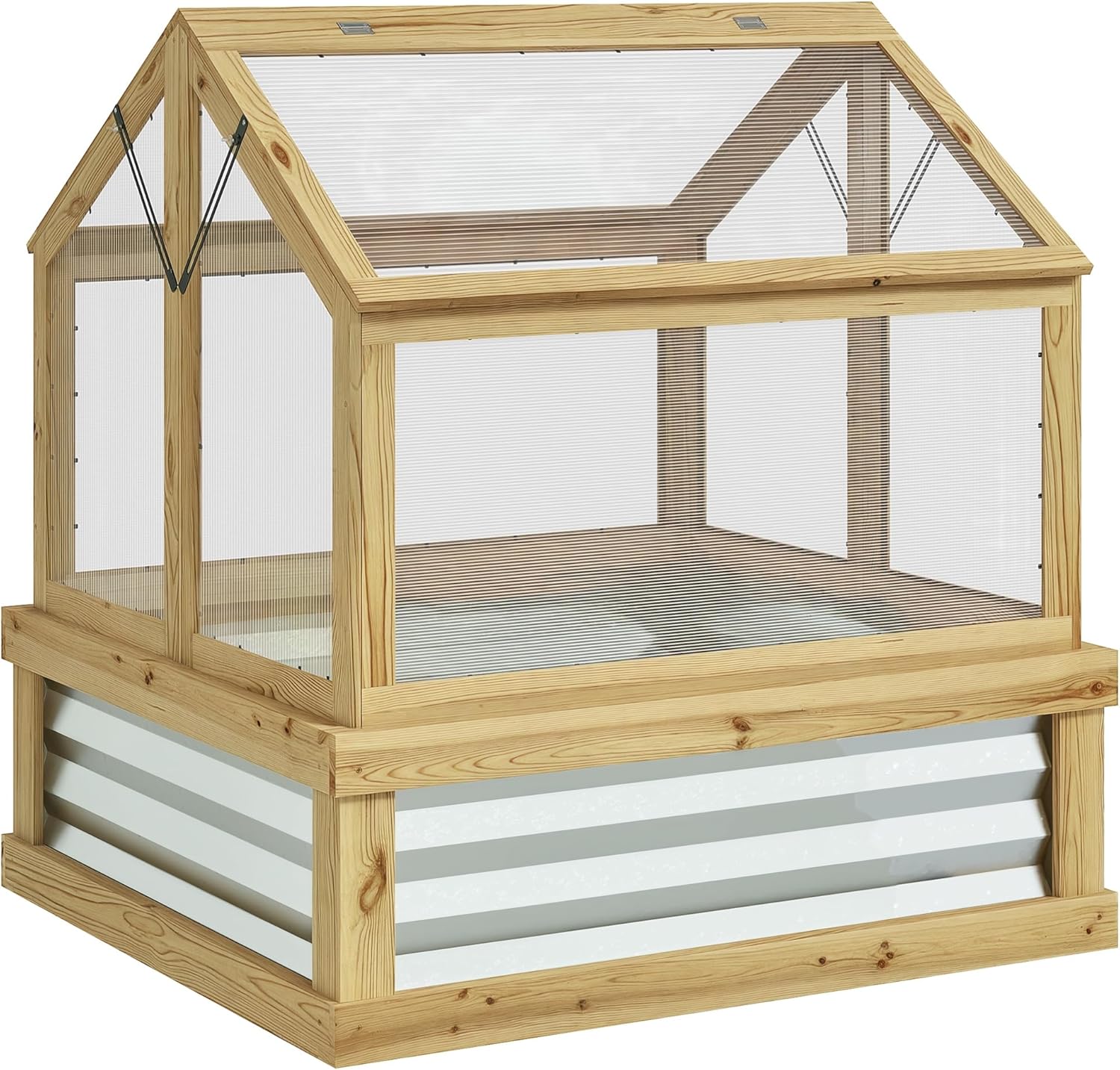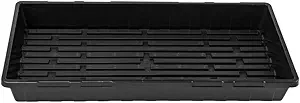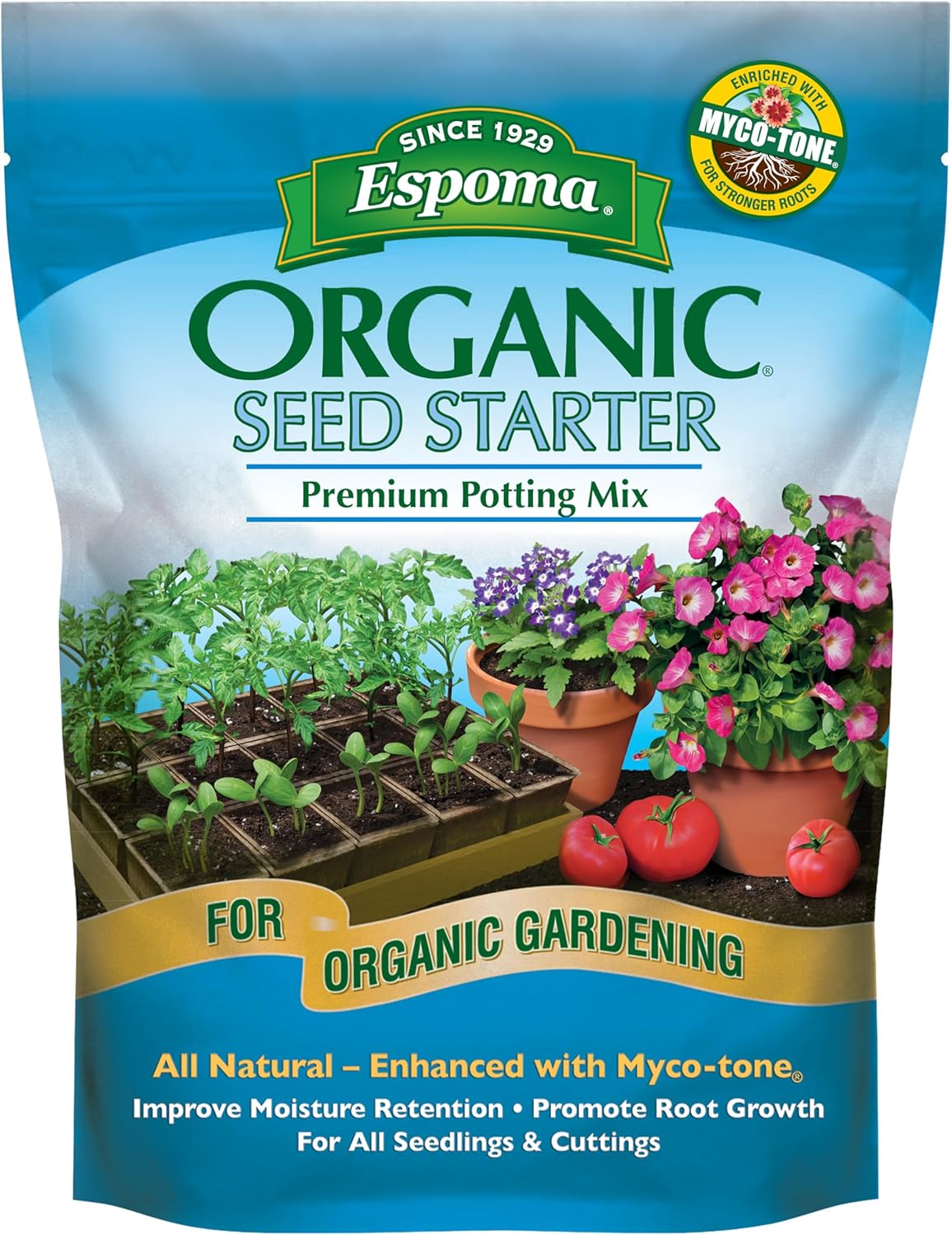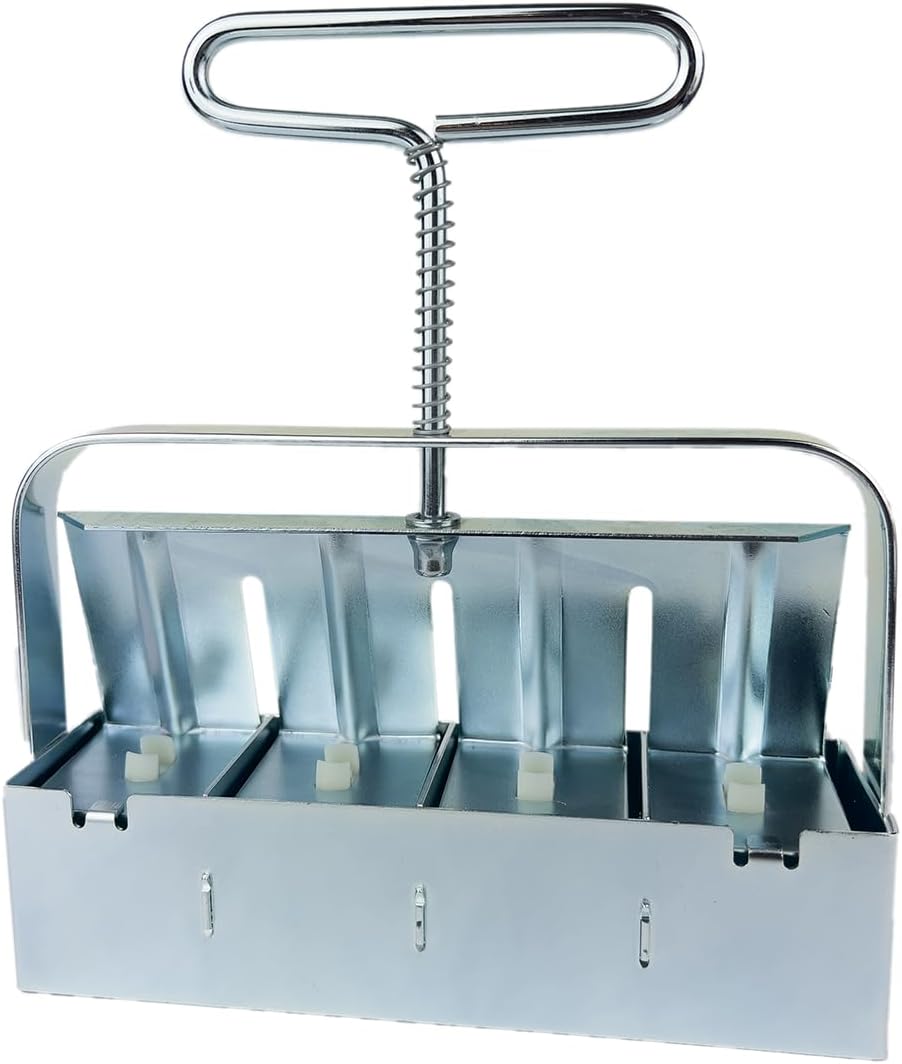What is the Ideal Temperature for a Greenhouse? (A Complete Guide)
Of all the questions new greenhouse owners ask, “What should the temperature be?” is by far the most important. Temperature is the master variable in your protected garden—it dictates how fast your plants grow, whether they produce fruit, and even if they survive the night. Get it right, and you’ll be rewarded with a lush, year-round paradise. Get it wrong, and you risk a season of frustration.
The Quick Answer
While the true answer is “it depends on what you’re growing,” the ideal temperature range for a general-purpose, mixed-crop hobby greenhouse is between 80-85°F (27-29°C) during the day and 65-75°F (18-24°C) at night. This range is a happy medium that supports vigorous growth for the most popular greenhouse vegetables.
Why Trust This Temperature Guide?
Here at Greenhouse Zone, we live and breathe greenhouse climate control. This guide isn’t based on theory; it’s forged from years of hands-on experience managing greenhouses in diverse U.S. climates. We’ve fine-tuned temperatures for everything from cool-weather greens in a Zone 5 winter to heat-loving melons in a Zone 9 summer. We have tested and relied on the technologies we recommend—from heaters and fans to automated vents and wireless sensors—to protect our plants and maximize our harvests. We understand the science of plant respiration, the nuances of the day/night differential, and the practical realities of heating and cooling a structure. This guide combines our hard-won expertise with horticultural science to give you the most accurate and practical advice available.
It Depends on the Crop: Temperature Needs Vary
The “ideal” temperature is not one-size-fits-all. Different plants have evolved in different climates, and their preferences reflect that. Grouping plants with similar temperature needs is a pro-level strategy, but even in a mixed greenhouse, understanding these groups is key. For an in-depth look at what to plant, check out our guide to the best vegetables to grow in a greenhouse.
| Plant Category | Ideal Day Temperature (°F) | Ideal Night Temperature (°F) |
|---|---|---|
| Cool-Season Crops (Lettuce, Spinach, Kale, Broccoli, Peas) |
60 – 70°F | 50 – 60°F |
| Warm-Season Crops (Tomatoes, Peppers, Cucumbers, Eggplant) |
75 – 85°F | 65 – 75°F |
| Seed Germination (Most vegetables) |
75 – 85°F (Consistent) | 75 – 85°F (Consistent) |
| General Purpose (Mixed) (Best compromise for hobbyists) |
80 – 85°F | 65 – 75°F |
The Day/Night Difference (DIF): A Gardener’s Secret Weapon
Did you notice that the ideal night temperature is always lower than the day temperature? This is critically important. Plants photosynthesize (create energy) during the day and respire (use energy) at night. A cool-down period of 10-15°F at night slows respiration, conserving energy for fruit production and preventing “leggy,” stretched-out growth. An accurate thermostat on your heating and cooling equipment is key to managing this differential automatically.
How to Achieve and Maintain the Ideal Temperature
Mastering your greenhouse climate means having a strategy for both heating and cooling. It’s a year-round balancing act that requires the right tools and techniques. This is one of the most important lessons in our greenhouse gardening tips for beginners guide.
☀️ Managing Heat (Cooling)
Overheating is the most immediate threat in a greenhouse. On a sunny day, even in winter, a sealed greenhouse can quickly become hot enough to kill your plants.
- Ventilation: This is your first line of defense. Opening roof vents and doors creates a natural convection that pulls hot air out. For active cooling, an exhaust fan system is the most effective tool.
- Shade Cloth: In regions with intense summer sun, a shade cloth is essential. It can reduce the internal temperature by 15°F or more, preventing plant stress and sun scorch.
- Air Circulation: An internal circulation fan prevents hot spots from forming and ensures an even temperature throughout the space.
- Damping Down: On very hot days, hosing down the floor and pathways increases humidity and cools the air through evaporation.
❄️ Managing Cold (Heating)
Protecting your plants from freezing temperatures is the primary reason most gardeners invest in a heater. An effective heating strategy starts with good insulation.
- Insulation: Your best defense against the cold. Twin-wall polycarbonate panels, used in quality kits or a project from our how to build a greenhouse at home guide, offer far better insulation than single-pane glass or plastic film.
- Choose the Right Heater: You need a heater rated for damp environments and sized correctly for your space. For a complete breakdown, see our guide to the best greenhouse heaters.
- Air Circulation: Just as with cooling, a circulation fan is crucial for distributing warm air evenly from your heater and preventing cold spots. Proper airflow is also easier to achieve with well-organized best greenhouse shelving.
Essential Tools for Temperature Mastery
You can’t control what you can’t measure. Equipping your greenhouse with a few key tools will transform your temperature management from guesswork to a precise science. This is especially true for smaller structures like the best portable greenhouses, which can fluctuate in temperature very quickly.

Wireless Thermo-Hygrometer
This is the single most important tool. It lets you monitor both temperature and humidity from inside your house, alerting you to problems before they become critical.
Shop on Amazon
Automatic Vent Opener
This “set it and forget it” device uses a wax-filled cylinder to automatically open your roof vent when it gets hot, providing essential cooling even when you’re not home.

Circulation Fan
A must-have for distributing heat, reducing humidity on leaf surfaces, and preventing hot/cold spots. Choose a model rated for damp locations for safety.
Shop on Amazon
Aluminet Shade Cloth
In hot U.S. climates, a reflective aluminet shade cloth is the most effective way to block intense solar radiation and keep your greenhouse cool during peak summer.
Shop on AmazonFrequently Asked Questions
What temperature is too hot for a greenhouse?
Generally, sustained temperatures above 90°F (32°C) will cause most plants to experience heat stress. They may stop producing fruit (e.g., tomatoes dropping their blossoms) and become vulnerable to pests. Above 100°F (38°C) can be lethal for many common vegetables.
What temperature is too cold for a greenhouse?
For most common vegetables, temperatures below 50°F (10°C) will cause them to stop growing. A light frost, between 32°F and 28°F (0°C to -2°C), will damage or kill tender plants like tomatoes and peppers. A hard freeze, below 28°F (-2°C), will kill most non-frost-hardy plants.
Conclusion: Become Your Greenhouse’s Thermostat
Mastering the temperature in your greenhouse is the key that unlocks its full potential. By understanding the specific needs of your plants and using the right tools to create a stable environment, you transform a simple structure into a finely tuned engine for year-round growth. Remember the general sweet spot of 80-85°F by day and 65-75°F by night, but more importantly, observe your plants. They are the ultimate sensors and will tell you everything you need to know.
